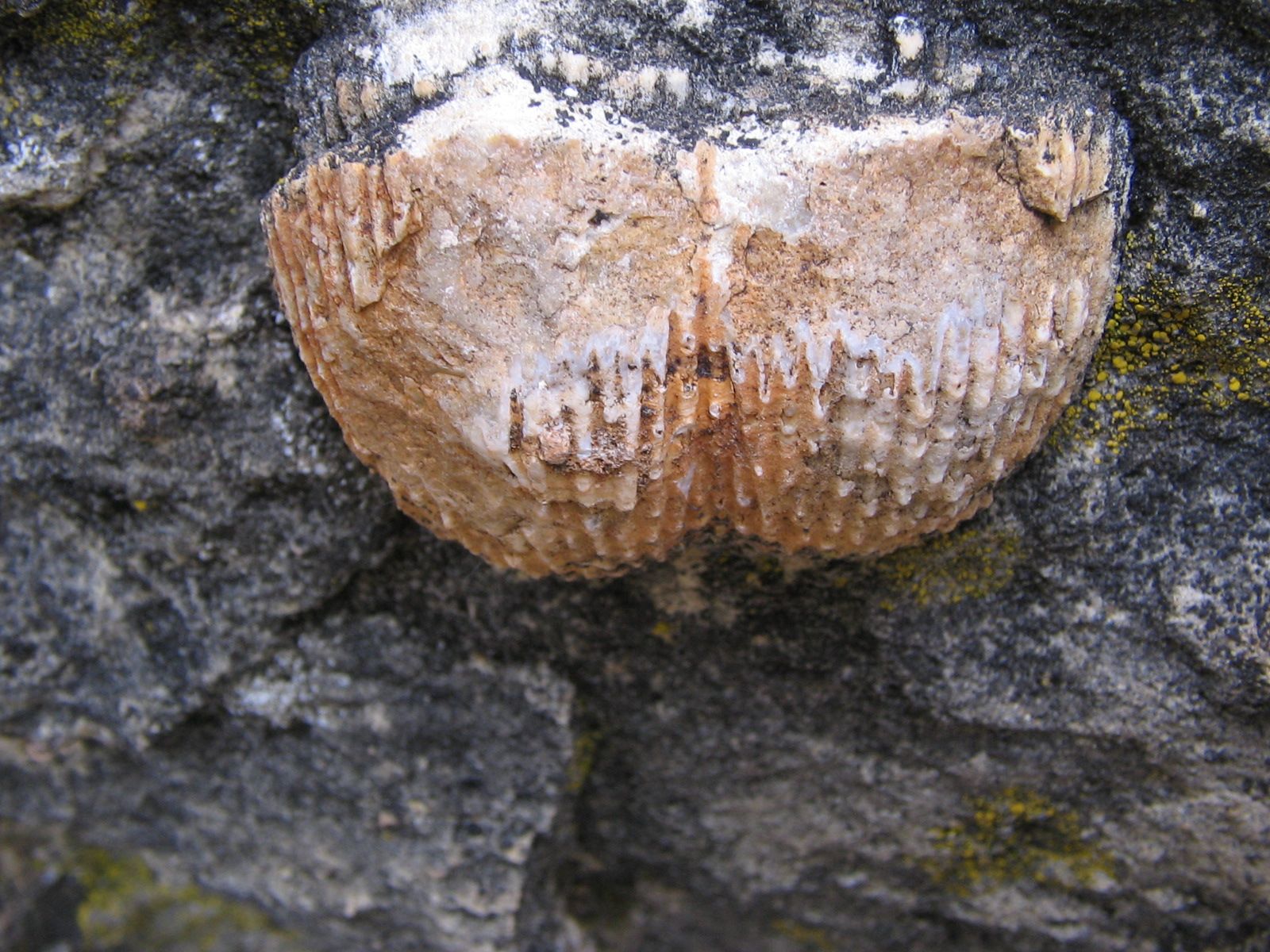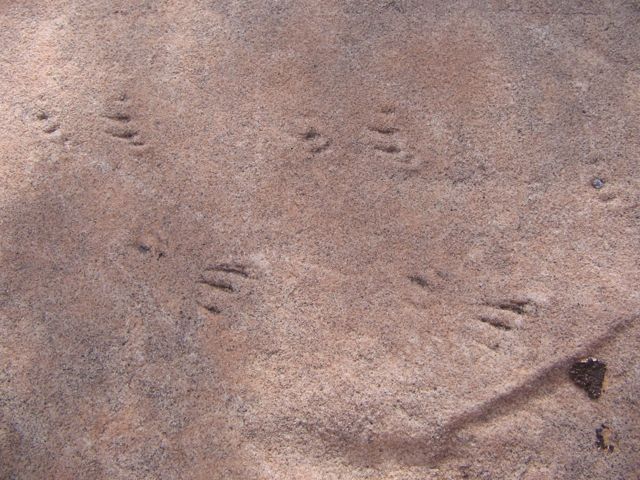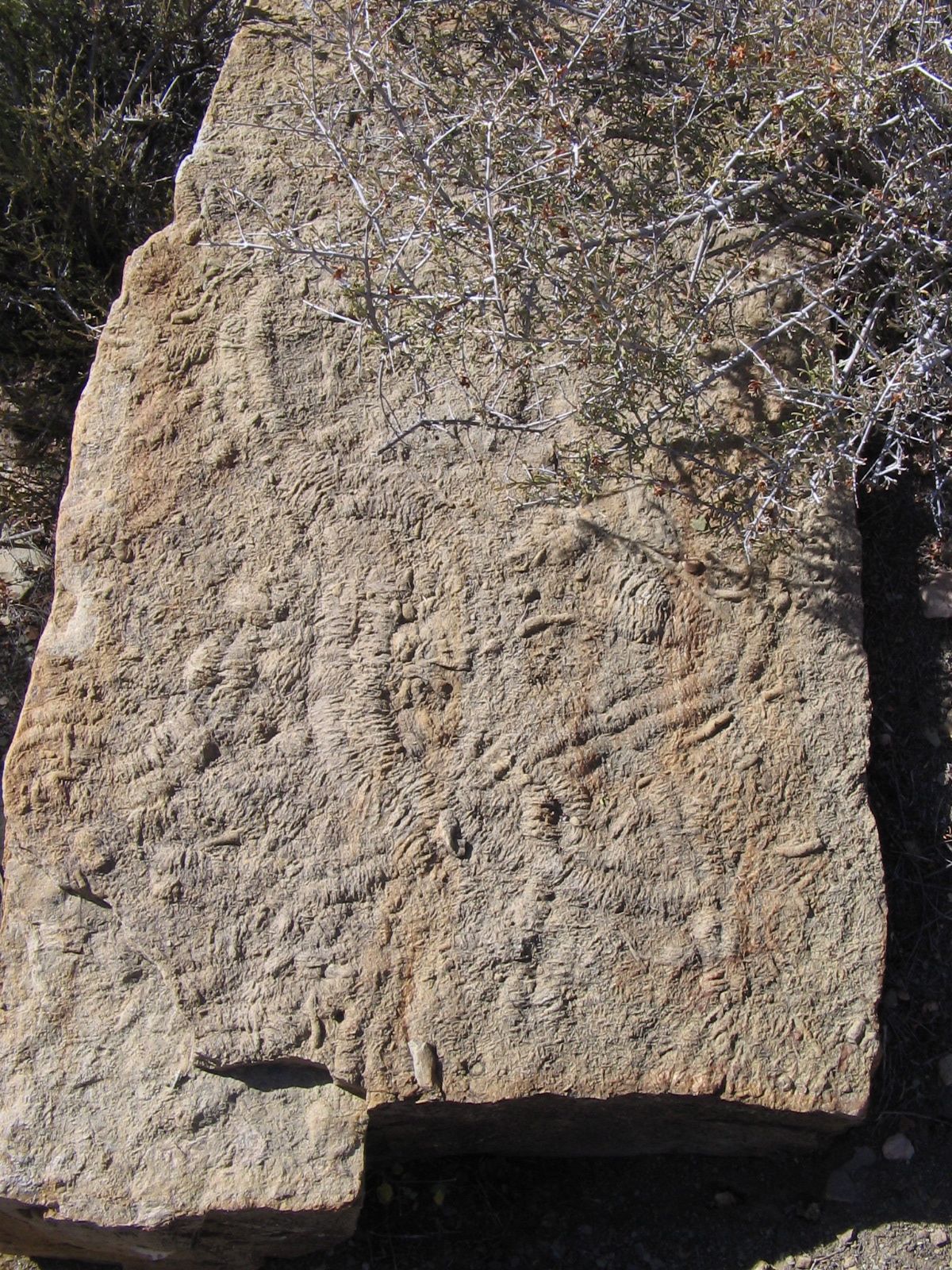Set in Stone

Brachiopods are prevalent in the Kaibab Limestone. Most species of these ancient lampshells vanished during the Great Permian extinction.

Crinoids, or Sea Lilies, are animals that lived in shallow oceans. Most of these, too, vanished during the Great Permian extinction. Look for these little "cheerio" fossils.

Not all fossil traces are of living things. These mud cracks testify to a changing climate.

My faithful cohort, Clyde, lends some scale to these spider tracks from the middle Permian.

Only ichtofossils have been found in the Coconino Sandstone, including tracks such as these left by mammal-like reptiles.

Usually all one finds of trilobites are the tracks they left. This highly successful predator first appears in the Cambrian sea (Tapeats Sandstone) and vanishes in the Great Permian Extinction. The scientific name for this type of track is Cruziana.
The oldest fossils found in the Grand Canyon are those of stromatolites. These were deposited by a cynobacteria 1200 million years ago. Until these photosynthesizing organisms developed and began to release oxygen into the atmosphere, there could be no life above the seas. The observant hiker may see stromatolites on the South Kaibab and North Kaibab trails.
